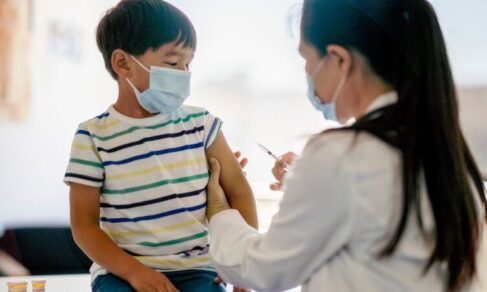Coverage for all routine vaccinations for children under the age of five in England are now below the 95% target set by the World Health Organization (WHO).
NHS Digital data published today reveals that uptake for 13 of the 14 routine vaccinations have fallen in 2021-21, compared with the previous year.
Related Article: Community nurses call for more ‘GP back-up’ in palliative care decisions
The data shows that in 2021-22, only 89% of children had had their first dose of the measles, mumps and rubella (MMR) vaccine, down from 90% the year before. Only 85% had received their second dose by their fifth birthday, a decrease from 87% the previous year.
Of all the vaccinations offered to under fives, only the coverage of pneumococcal disease has increased. However, this is compared to 2019-20 figures, as there is no data for 2020-21. Although it increase from 93% to 94% in this time, this is still below the 95% WHO target.
The region with the highest childhood vaccination coverage for MMR was the north east of England with 94.5%, but no region met the WHO target.
An NHS spokesperson said: “This data covers the pandemic, when people were much less likely to come forward for childhood vaccinations.
Related Article: All GP practices to be trained in supporting veterans in £1.8m programme
‘Childhood vaccinations last for life so it is never too late to come forward for one, which is why this year the NHS launched a wider childhood vaccination recovery programme including a mass MMR catch-up campaign to help vaccinate children who missed a vaccine – any parent or carer whose child missed out on a vaccination should come forward and book their child in without delay.’
With national coverage down only 0.2% on the previous year, eight out of nine regions were able to achieve 90% coverage. However, only the north east was able to reach the target of 95%.
Related Article: Action needed on ‘damaging’ school nurse decline to help tackle STI rise
In London, which had the lowest uptake of both vaccines, only 87% had received the 6-in-one or 5-in-one vaccinations by their second birthday.






